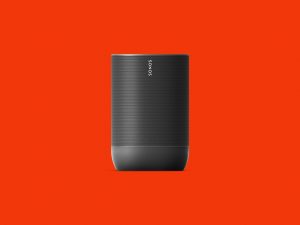TikTok, the wildly popular social media app that revolves round 15-second video clips, has become a major cultural force. It has birthed chart-topping hits like “Old Town Road” by Lil Nas X, incubated new subcultures like VSCO girls, and become the default way to goof off at work. But there’s a simple facet of the app—which has been downloaded over 1.4 billion times globally—that has received far less attention: It exists outside of time.
Unlike other social media platforms, TikTok is totally stripped of information like when a video was uploaded or the date a user opened their account. The app presents an endless stream of algorithmically chosen videos, which you swipe through vertically. But there’s no way to discern when any of them were posted. Tap on a user’s profile and their videos will appear in reverse chronological order, but they only display view counts. Sites like Facebook and Twitter prioritize recently uploaded content. But TikTok, named after the sound a clock makes, has no time for time itself—a decision that ripples across the entire platform.
The most obvious byproduct of that choice: TikTok videos that are weeks or even months old—an eternity on the internet—can suddenly go viral, with viewers blind to their age. “It’s cool that older content can still be enjoyed weeks later, but also annoying that instead of seeing new content I see videos from months ago,” says Moria Bryson, a TikTok creator with over 200,000 followers who goes by @mannequindude. “I wouldn’t say it interferes with my content making, but I wish it was easier to tell when videos were posted.”
While creators say the absence of time stamps can be frustrating, the design choice almost certainly helps boost engagement for Bytedance, TikTok’s Chinese parent company and one of the highest-valued startups in the world. TikTok’s feed is endless, and it’s dangerously easy to lose hours watching videos on the app. But the experience is unlike scrolling through Instagram, where signposts remind you that you’ve delved three years into someone’s past. If TikTok gave similar guidance, “that would interrupt our consumption of that endless stream,” says Ben Grosser, a professor of new media at the University of Illinois at Urbana-Champaign and the artist behind Demetricator, a tool that strips social media sites of metrics such as likes, shares, and time stamps.
Grosser says his research indicates that users treat older content on social media differently: Anything aged more than two days often isn’t worth engaging with. For example, it’s now a minor faux pas to comment on someone’s Facebook status a week after it was posted—that indicates you weren’t paying attention or, worse, went snooping. There’s no similar harm in liking a 10-day -ld TikTok video, since there’s no way to know it was uploaded that long ago.
Grosser also points out that unlike Instagram, Snapchat, Twitter, and Facebook, TikTok prevents users from keeping track of the time by covering the clock displayed at the top of their iPhones. That means TikTok addicts like me can quickly lose track of how many minutes we’ve spent on the app. To cope, I recently began subconsciously counting time on TikTok’s terms, telling myself things like, I can watch three more videos before going back to work, for example, roughly equivalent to a minute or two. In this way, Grosser says, I came up with my own internal way of measuring time—since the platform declined to provide the ones I usually rely on.
The lack of time on TikTok helps dictate not only how users behave but also what kinds of content can thrive on the app. Time stamps, for example, are an essential part of reporting news. By not having them, TikTok subtly signals to users that it’s not a platform for world events, it’s merely here to “inspire creativity and bring joy,” a far less controversial mission. That ethos is reflected in the media organizations that are on TikTok, like The Washington Post, which almost exclusively posts jokes and sketches for its audience of nearly 150,000 followers, rather than news updates.
Lowering the incentive to post news content also helps TikTok potentially avoid the kinds of scandals that have embroiled other platforms, like accusations of political bias. The company has shown it has few qualms about censoring potentially controversial posts: Moderation guidelines obtained by The Guardian show TikTok staff were instructed to censor topics deemed sensitive by the Chinese government, as well as LGBT content in some markets. The company has said the instructions are outdated.
But by omitting time stamps, TikTok might open itself up to other scandals, like the proliferation of misinformation. It’s significantly harder to discern the legitimacy of a video when there’s no way to tell when it was created. The hashtag #protest, for example, includes numerous clips that appear to be from the recent youth-led climate change strikes that took place last month. But without any date attached to them, it’s often hard to know for sure. And while TikTok has avoided revealing dates and times, other platforms, like Facebook, have recently begun providing users with even more of this data to combat their fake-news problems. After Russia used Facebook pages to interfere with the 2016 US presidential election, for example, the social network made all pages more transparent by including the date they were created and whether their name had been changed recently.
TikTok’s time-free status also has more mundane but still annoying repercussions. Katie Swanson, a Wisconsin mom better known as @coupon_katie, has amassed over 600,000 followers on the platform showing off her insanely advanced couponing skills. When she finds a good deal, Swanson often enthusiastically tells her fans to run to the store before it expires. But they have no way of knowing when that is, since viewers can’t tell when Swanson posted. “A lot of my videos are time-sensitive, so if they see one of my videos too late, they might not know if they missed out on a deal or not,” says Swanson, who has recently begun including the date in her captions. “I do like that my older content can always still be viewed, but a time stamp would be great.”
TikTok creators say the lack of time metrics on the platform exacerbates other problems, like content theft. “It can be hard to tell who posted a video first when two similar ones appear at the same time,” says Leanna Renee, a TikToker with over 200,000 followers who goes by @leannuh47. To keep track of their work, some TikTokers are taking advantage of the sole place where time is recorded on the platform: the comments. “The only way you can get any sort of idea how old a video is, is to track the comment history,” says Jessie Sayhey, a food TikToker with over 200,000 followers. “I personally had to start commenting on my own videos just so I can truly tell when I posted them.” TikTok comments leave behind a time stamp, but they’re organized by engagement, not chronology, so the oldest ones might still sink to the bottom.
There’s some evidence that TikTok is coming around to the idea of the Gregorian calendar, or at least testing the potential impact of introducing more time indicators. “There have been time stamps showing up randomly but inconsistently lately, like they’re experimenting with a rollout,” says Renee. A spokesperson for TikTok declined to comment on the record about any specific product changes or tests.
Other social platforms have found success in deemphasizing time metrics too, although not abandoning them entirely. To the annoyance of many users, Facebook, Twitter, and Instagram have all implemented algorithmic timelines in recent years and no longer display posts in reverse chronological order by default. With so much content out there, platforms need to factor in more than just recency when deciding what to feed you and when. By relying on machine learning algorithms, these companies also take into consideration your preferences and past behavior.
TikTok has taken that strategy to its logical extreme, which helps to explain not only its success but also some of its problems. The platform ultimately hopes that you not only stop caring when a video was posted, but perhaps forget what day it is entirely while scrolling through them.
More Great WIRED Stories
- TikTok—yes, TikTok—is the latest window into China’s police state
- A brutal murder, a wearable witness, and an unlikely suspect
- Capitalism made this mess, and this mess will ruin capitalism
- Cleaner ships may mean more expensive holidays
- The symmetry and chaos of the world’s megacities
- 👁 How do machines learn? Plus, read the latest news on artificial intelligence
- ✨ Optimize your home life with our Gear team’s best picks, from robot vacuums to affordable mattresses to smart speakers.



